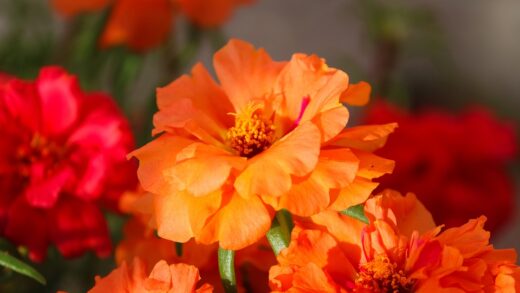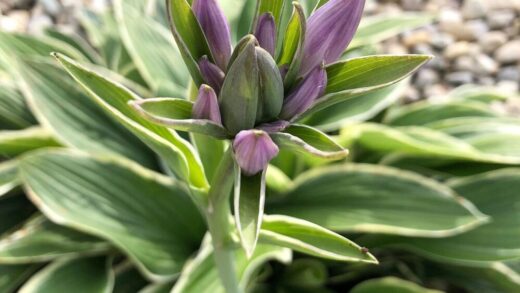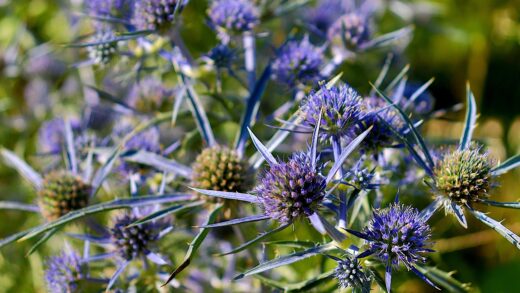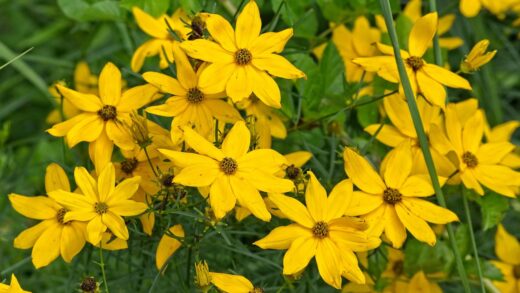Mastering the cultivation of the Madagascar periwinkle, a plant celebrated for its vibrant, resilient blooms, involves a comprehensive understanding of its fundamental needs. This species, though often treated as an annual in temperate climates, is a perennial native to Madagascar, which informs its preference for warmth and sunlight. Proper care ensures a continuous display of its characteristic pinwheel-shaped flowers from early summer until the first frost. Successful cultivation hinges on balancing key environmental factors, including light, water, and soil composition, to mimic its native tropical habitat as closely as possible. Neglecting any of these core components can lead to diminished flowering, poor growth, and increased susceptibility to diseases.
The plant’s inherent hardiness makes it a popular choice for gardeners seeking low-maintenance yet high-impact colour in their landscapes and containers. Its tolerance for heat and periods of drought is a significant advantage in warm summer climates where other bedding plants might struggle. However, this resilience should not be mistaken for invincibility; consistent care routines are crucial for optimal performance. Providing the right foundation from the outset, starting with site selection and soil preparation, will pay dividends throughout the growing season. Ultimately, a thriving Madagascar periwinkle is a testament to the gardener’s attention to its basic, yet specific, requirements.
Despite its tropical origins, the Madagascar periwinkle has been successfully adapted for cultivation in a wide range of gardening contexts, from formal flowerbeds to casual container arrangements. Its upright, bushy growth habit makes it an excellent “filler” plant, providing structure and continuous colour alongside other sun-loving annuals. The glossy, dark green foliage offers a beautiful contrast to the bright flowers, which come in shades of white, pink, red, and lavender. Understanding how to harness these aesthetic qualities through proper care allows for its effective integration into diverse garden designs.
A proactive approach to its maintenance is far more effective than a reactive one. Regularly inspecting the plants for any signs of stress, such as yellowing leaves or wilting, allows for timely intervention before minor issues escalate. This includes monitoring soil moisture levels, watching for the first signs of pest activity, and ensuring that the plants are not becoming overcrowded. A consistent and observant care strategy is the cornerstone of cultivating healthy, floriferous Madagascar periwinkle specimens that remain a highlight of the garden all season long.
Ideal growing conditions
The primary condition for a thriving Madagascar periwinkle is an abundance of direct sunlight, which is essential for vigorous growth and prolific flowering. This plant performs best when it receives at least six to eight hours of full, unfiltered sun each day. Inadequate light exposure will result in leggy, stretched stems and a significant reduction in the number of blooms produced. When selecting a planting location, choose the sunniest and warmest spot available, such as a south-facing garden bed or a patio that is not shaded by trees or structures for most of the day. This commitment to providing maximum light is non-negotiable for achieving the plant’s full potential.
More articles on this topic
Heat is another critical component of the ideal environment, as the Madagascar periwinkle flourishes in high temperatures that can cause other plants to wilt and decline. It is exceptionally well-suited to hot summer climates and will continue to produce flowers even during intense heatwaves. This makes it an invaluable asset for maintaining garden colour through the peak of summer. The plant should not be set outdoors in the spring until all danger of frost has passed and night-time temperatures consistently remain above 15 degrees Celsius. Cold temperatures can stunt its growth and cause damage to the foliage.
Proper air circulation is also a key factor in maintaining the health of the Madagascar periwinkle, particularly in humid conditions. Good airflow around the plants helps to dry the foliage quickly after rain or irrigation, which significantly reduces the risk of fungal diseases such as leaf spot and botrytis blight. Avoid planting them too densely; spacing them according to their mature size allows for sufficient air movement between individual plants. In container plantings, ensure pots are not crowded together, and in garden beds, periodic thinning can improve circulation if the plants become overly dense.
Finally, the plant thrives in a location that offers some protection from strong, persistent winds. While established plants are relatively sturdy, constant wind can dry out the foliage and soil, leading to increased water stress and potential physical damage to the stems and flowers. Planting near a wall, fence, or a windbreak of sturdier shrubs can provide the necessary shelter without compromising sun exposure. This small consideration can make a significant difference in the overall appearance and health of the plants, allowing them to focus their energy on producing a spectacular floral display.
Soil and potting medium requirements
The Madagascar periwinkle demands well-draining soil and is highly intolerant of waterlogged conditions, which can quickly lead to root rot and other fungal diseases. The ideal soil is sandy or loamy in texture, allowing excess water to percolate away from the roots efficiently. Heavy clay soils that retain moisture for extended periods are unsuitable and must be amended before planting. If you are working with compacted or clay-heavy soil, incorporating generous amounts of organic matter like compost, pine bark fines, or coir can dramatically improve its structure and drainage. This preparation is a critical first step towards establishing a healthy root system.
More articles on this topic
When it comes to soil pH, the Madagascar periwinkle prefers a slightly acidic to neutral range, typically between 6.0 and 7.0. While it can tolerate a slightly wider spectrum, growth and nutrient uptake are optimized within this specific window. It is advisable to conduct a simple soil test before planting to determine the existing pH level of your garden bed. If the soil is too alkaline, amendments such as elemental sulphur or iron sulphate can be used to lower the pH gradually. Conversely, if the soil is excessively acidic, lime can be added to raise the pH to a more suitable level for the plant.
For container cultivation, selecting the right potting medium is paramount to success. Use a high-quality, all-purpose potting mix that is specifically formulated to provide good drainage. Avoid using heavy garden soil in pots, as it compacts easily, restricts aeration, and retains too much moisture. Many commercial potting mixes already contain components like perlite, vermiculite, or sand to enhance drainage. Ensure that any container chosen has ample drainage holes at the bottom to allow excess water to escape freely, as this is the most critical factor in preventing root diseases in potted specimens.
Furthermore, while the plant is not a heavy feeder, it appreciates soil that is moderately fertile. Amending the garden bed or potting mix with a slow-release, balanced granular fertilizer at planting time can provide a steady supply of essential nutrients throughout the growing season. Alternatively, incorporating well-rotted compost into the soil will not only improve its structure and drainage but also enrich it with a natural source of nutrients. This initial soil enrichment helps to support the vigorous growth and continuous flowering that the Madagascar periwinkle is known for.
Essential routine maintenance
Consistent deadheading, or the removal of spent flowers, is a crucial maintenance task that encourages the Madagascar periwinkle to produce new blooms continuously. Although many modern cultivars are self-cleaning to some extent, manually pinching off old flowers before they set seed redirects the plant’s energy into creating more blossoms. This simple practice can significantly extend the flowering period and maintain a tidy, attractive appearance throughout the season. Make it a habit to inspect your plants every few days and remove any faded or withered flowers by pinching the stem just below the flower head.
Regularly monitoring for signs of water stress is another key aspect of routine care, even for this drought-tolerant species. While the Madagascar periwinkle can withstand dry conditions, it performs best with consistent moisture. Check the soil every few days, especially during hot, dry weather, and water thoroughly when the top inch or two of soil feels dry to the touch. It is particularly important to maintain adequate moisture for plants grown in containers, as the soil in pots dries out much more quickly than in garden beds. Consistent watering promotes lush foliage and supports the development of a robust flowering display.
Weed control is an important, though often overlooked, part of routine maintenance that directly impacts plant health. Weeds compete with the Madagascar periwinkle for essential resources such as water, nutrients, and sunlight, which can inhibit its growth and flowering potential. Applying a two- to three-inch layer of organic mulch, such as shredded bark or pine straw, around the base of the plants can effectively suppress weed growth. Mulching also offers the added benefits of conserving soil moisture and regulating soil temperature, creating a more stable environment for the plant’s roots.
Periodic pinching or light trimming of the stems can help to encourage a bushier, more compact growth habit. If plants start to become leggy or sparse, especially mid-season, trimming back the longest stems by about one-third can stimulate new branching and a fuller appearance. This is particularly effective for plants in hanging baskets or containers where a dense, mounded shape is desired. This light pruning rejuvenates the plant, leading to a fresh flush of growth and an even more impressive floral display in the subsequent weeks.
Adjusting care for containers
Cultivating Madagascar periwinkle in containers requires a more attentive approach to watering compared to garden-grown plants. The limited volume of soil in pots and hanging baskets dries out much faster, especially on hot, sunny, and windy days. It is essential to check the moisture level of the potting mix daily, often by simply feeling the top inch of soil. During the peak of summer, containerized plants may require watering every day, or even twice a day in very hot climates, to prevent wilting and stress. Always water thoroughly until you see excess draining from the bottom holes, ensuring the entire root ball is saturated.
Nutrient management is also more critical for container-grown specimens, as the frequent watering required can leach nutrients from the potting soil over time. The finite amount of soil simply cannot sustain the plant’s needs for the entire season without supplementation. To support continuous, heavy blooming, you should implement a regular feeding schedule. Use a balanced, water-soluble fertilizer at half-strength every two to three weeks, or apply a slow-release granular fertilizer to the soil surface at planting and again mid-season, following the product’s instructions. This consistent supply of nutrients is vital for maintaining plant vigour and flower production.
Container size and type play a significant role in the success of growing Madagascar periwinkle. Choose a pot that is proportional to the mature size of the plant, providing enough room for root development without being excessively large. A pot that is too small will restrict root growth and dry out too quickly, while an overly large pot can hold too much moisture, increasing the risk of root rot. Materials like terracotta are porous and allow for better soil aeration, but they also dry out faster than plastic or glazed ceramic containers, which will influence your watering frequency.
Over time, plants in containers can become root-bound, meaning their roots have filled the entire pot and have no more room to grow. This can lead to stunted growth, reduced flowering, and a plant that wilts quickly. If you notice these symptoms and the plant has been in the same pot for a long time, it may be time to repot it into a slightly larger container with fresh potting mix. When repotting, gently loosen the tangled roots to encourage them to grow into the new soil. This is typically more relevant for plants you intend to overwinter rather than those treated as annuals.
Addressing common challenges
One of the most common challenges in caring for Madagascar periwinkle is overwatering, which is a frequent cause of its decline. The plant’s roots are highly susceptible to rot when left in saturated, poorly draining soil. Symptoms of overwatering often mimic those of underwatering, such as yellowing leaves and wilting, which can confuse gardeners into watering even more. To avoid this, always check the soil moisture before irrigating and ensure your garden beds or containers have excellent drainage. It is always better to err on the side of letting the plant get slightly dry than to keep it constantly wet.
Another frequent issue is the development of fungal diseases, often exacerbated by high humidity, poor air circulation, and overhead watering. Leaf spot, botrytis, and aerial phytophthora can cause spots on the leaves, stem rot, and a general decline in plant health. To prevent these problems, water the plants at the base, directly onto the soil, to keep the foliage as dry as possible. Provide adequate spacing between plants to promote good air movement, and remove any diseased leaves or stems immediately to prevent the spread of pathogens.
Nutrient deficiencies can sometimes present a challenge, particularly in container plants or in soils that are poor or have an improper pH. Yellowing leaves, or chlorosis, can indicate a lack of essential nutrients like nitrogen or iron. If the new leaves are yellow with green veins, it often points to an iron deficiency, which can be caused by soil pH being too high. Ensuring the soil pH is in the correct range (6.0-7.0) is the first step. If a deficiency is suspected, a dose of a balanced, all-purpose liquid fertilizer can provide a quick boost of nutrients to address the issue.
Finally, while generally robust, Madagascar periwinkle can occasionally be affected by pests such as aphids and spider mites, especially when plants are stressed. Aphids tend to congregate on new growth and flower buds, while spider mites are more common in hot, dry conditions and can be identified by fine webbing on the undersides of leaves. For minor infestations, a strong spray of water from a hose can often dislodge the pests. If the problem persists, insecticidal soap or horticultural oil can be used as a targeted treatment, following the application instructions carefully to avoid damaging the plant.


















